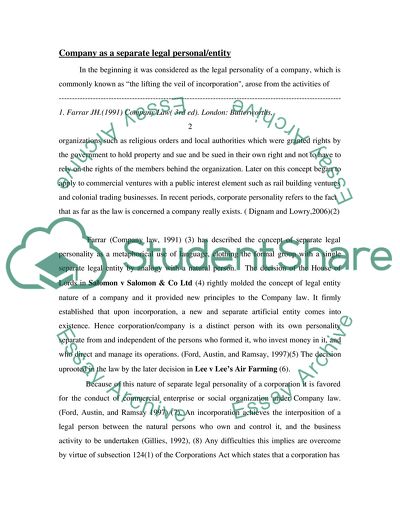Cite this document
(Separate Legal Entity, Limited Liability and Criminal Responsibility Case Study, n.d.)
Separate Legal Entity, Limited Liability and Criminal Responsibility Case Study. Retrieved from https://studentshare.org/law/1711933-what-role-do-the-principles-of-separate-legal-personality-and-limited-liability-play-in-english-company-law-to-what-extent-are-and-should-limited-companies-b
Separate Legal Entity, Limited Liability and Criminal Responsibility Case Study. Retrieved from https://studentshare.org/law/1711933-what-role-do-the-principles-of-separate-legal-personality-and-limited-liability-play-in-english-company-law-to-what-extent-are-and-should-limited-companies-b
(Separate Legal Entity, Limited Liability and Criminal Responsibility Case Study)
Separate Legal Entity, Limited Liability and Criminal Responsibility Case Study. https://studentshare.org/law/1711933-what-role-do-the-principles-of-separate-legal-personality-and-limited-liability-play-in-english-company-law-to-what-extent-are-and-should-limited-companies-b.
Separate Legal Entity, Limited Liability and Criminal Responsibility Case Study. https://studentshare.org/law/1711933-what-role-do-the-principles-of-separate-legal-personality-and-limited-liability-play-in-english-company-law-to-what-extent-are-and-should-limited-companies-b.
“Separate Legal Entity, Limited Liability and Criminal Responsibility Case Study”. https://studentshare.org/law/1711933-what-role-do-the-principles-of-separate-legal-personality-and-limited-liability-play-in-english-company-law-to-what-extent-are-and-should-limited-companies-b.


